 To allay public fears that the next level might not be reached, NASA offers an explanation for an enigmatic 2010 image from the Hubble Space Telescope, showing a galaxy cluster, Abell 68, approximately 2,000,000,000 light years away. In the middle of that cluster, however, is what appears to be an alien from the video game Space Invaders. NASA explains that it’s a visual artifact of gravitational lensing caused by the gravity influence of the foreground galaxies upon the light of galaxies further away in the image. Earth breathes easy once more.
To allay public fears that the next level might not be reached, NASA offers an explanation for an enigmatic 2010 image from the Hubble Space Telescope, showing a galaxy cluster, Abell 68, approximately 2,000,000,000 light years away. In the middle of that cluster, however, is what appears to be an alien from the video game Space Invaders. NASA explains that it’s a visual artifact of gravitational lensing caused by the gravity influence of the foreground galaxies upon the light of galaxies further away in the image. Earth breathes easy once more.
![]() BBC Multimedia releases the first-person shooter Doctor Who: Destiny of the Doctors for Windows PCs in the UK. Featuring sound clips from the classic series, the game also boasts the last new footage of actor Anthony Ainley in character as the Master.
BBC Multimedia releases the first-person shooter Doctor Who: Destiny of the Doctors for Windows PCs in the UK. Featuring sound clips from the classic series, the game also boasts the last new footage of actor Anthony Ainley in character as the Master. ![]()


 Nichibutsu, originators of the 1980 arcade game Crazy Climber, releases the 3-D sequel/remake
Nichibutsu, originators of the 1980 arcade game Crazy Climber, releases the 3-D sequel/remake 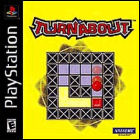
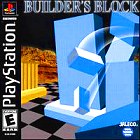

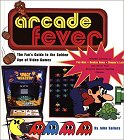 Running Press publishes John Sellers’ non-fictional recap of the video game industry’s early landmark titles, “
Running Press publishes John Sellers’ non-fictional recap of the video game industry’s early landmark titles, “ Nintendo releases
Nintendo releases  MIT Press publishes Van Burnham’s non-fictional history of the video game industry and its products, “
MIT Press publishes Van Burnham’s non-fictional history of the video game industry and its products, “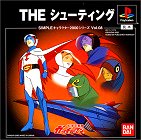
 Intellivision Productions (a collective of programmers and designers who created the games for the iconic ’80s video game console) releases the album
Intellivision Productions (a collective of programmers and designers who created the games for the iconic ’80s video game console) releases the album  Rolenta Press publishes
Rolenta Press publishes  Ralph Baer, the inventor of home video games, receives the National Medal of Technology from President George W. Bush. While working for defense contractor Sanders & Associates in the 1960s, Baer pioneered the concept of interactive television programming, eventually gathering a hand-picked team to create a prototype called the Brown Box. Baer and his employer licensed the technology to Magnavox, which repackaged it and marketed it as the world’s first home video game console, the Odyssey. Baer also created other key video game innovations, such as the first light gun.
Ralph Baer, the inventor of home video games, receives the National Medal of Technology from President George W. Bush. While working for defense contractor Sanders & Associates in the 1960s, Baer pioneered the concept of interactive television programming, eventually gathering a hand-picked team to create a prototype called the Brown Box. Baer and his employer licensed the technology to Magnavox, which repackaged it and marketed it as the world’s first home video game console, the Odyssey. Baer also created other key video game innovations, such as the first light gun. BBC subsidiary 2|entertain releases
BBC subsidiary 2|entertain releases  MIT Press publishes the non-fiction book
MIT Press publishes the non-fiction book 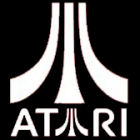 The 21st century iteration of Atari, now owned by the French video game company formerly known as Infogrames, files for Chapter 11 bankruptcy protection as it tries to disentangle itself from its parent company’s descent into insolvency. Revealed in the filing is that, despite numerous modern games distributed under the Atari “label”, licensing of the 1970s Atari logo accounts for almost one-fifth of Atari’s current revenue. The classic Atari game portfolio dating back to such games as
The 21st century iteration of Atari, now owned by the French video game company formerly known as Infogrames, files for Chapter 11 bankruptcy protection as it tries to disentangle itself from its parent company’s descent into insolvency. Revealed in the filing is that, despite numerous modern games distributed under the Atari “label”, licensing of the 1970s Atari logo accounts for almost one-fifth of Atari’s current revenue. The classic Atari game portfolio dating back to such games as  To allay public fears that the next level might not be reached, NASA offers an explanation for an enigmatic 2010 image from the Hubble Space Telescope, showing a galaxy cluster, Abell 68, approximately 2,000,000,000 light years away. In the middle of that cluster, however, is what appears to be an alien from the video game Space Invaders. NASA explains that it’s a visual artifact of gravitational lensing caused by the gravity influence of the foreground galaxies upon the light of galaxies further away in the image. Earth breathes easy once more.
To allay public fears that the next level might not be reached, NASA offers an explanation for an enigmatic 2010 image from the Hubble Space Telescope, showing a galaxy cluster, Abell 68, approximately 2,000,000,000 light years away. In the middle of that cluster, however, is what appears to be an alien from the video game Space Invaders. NASA explains that it’s a visual artifact of gravitational lensing caused by the gravity influence of the foreground galaxies upon the light of galaxies further away in the image. Earth breathes easy once more. The president of Nintendo through the latter half of the 20th century, Hiroshi Yamauchi, dies at the age of 85. Having dropped out of college to assume control of Nintendo from his ailiing grandfather in 1949, Yamauchi transformed the company from a maker of playing cards into a power player in the electronic game market, even though Nintendo’s first video game product was a licensed version of the American-made Magnavox Odyssey. Twice, Yamauchi boldly decided to break into the American video game market with no guarantee of success: once with the arcade game Donkey Kong, and again with the launch of the Nintendo Entertainment System, even after a Stateside licensing deal with Atari fell through at the last minute, depriving the NES of Atari’s existing marketing and distribution channels.
The president of Nintendo through the latter half of the 20th century, Hiroshi Yamauchi, dies at the age of 85. Having dropped out of college to assume control of Nintendo from his ailiing grandfather in 1949, Yamauchi transformed the company from a maker of playing cards into a power player in the electronic game market, even though Nintendo’s first video game product was a licensed version of the American-made Magnavox Odyssey. Twice, Yamauchi boldly decided to break into the American video game market with no guarantee of success: once with the arcade game Donkey Kong, and again with the launch of the Nintendo Entertainment System, even after a Stateside licensing deal with Atari fell through at the last minute, depriving the NES of Atari’s existing marketing and distribution channels.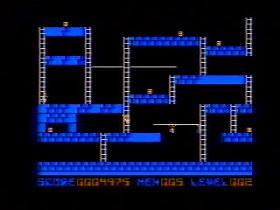 The creator and programmer of Lode Runner, Douglas E. Smith, dies at the age of 53. A spare-time creation that became an all-consuming passion for Smith, Lode Runner sparked a nearly unprecedented bidding war among major computer game publishers in 1983. At the time of Smith’s death, Lode Runner has been ported to most major game and computer systems over the past 31 years.
The creator and programmer of Lode Runner, Douglas E. Smith, dies at the age of 53. A spare-time creation that became an all-consuming passion for Smith, Lode Runner sparked a nearly unprecedented bidding war among major computer game publishers in 1983. At the time of Smith’s death, Lode Runner has been ported to most major game and computer systems over the past 31 years.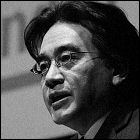 Nintendo of Japan CEO Satoru Iwata dies as a result of complications from gall bladder surgery. As the head of game developer HAL Laboratories, Iwata oversaw games in the Kirby, Super Smash Bros. and Pokemon series, until he replaced outgoing Nintendo CEO Hiroshi Yamauchi in 2002. His tenure saw the introduction of the Nintendo DS handheld, the Wii console, and the wildly popular Amiibo figurines, as well as unprecedented interaction with fans and customers on the internet.
Nintendo of Japan CEO Satoru Iwata dies as a result of complications from gall bladder surgery. As the head of game developer HAL Laboratories, Iwata oversaw games in the Kirby, Super Smash Bros. and Pokemon series, until he replaced outgoing Nintendo CEO Hiroshi Yamauchi in 2002. His tenure saw the introduction of the Nintendo DS handheld, the Wii console, and the wildly popular Amiibo figurines, as well as unprecedented interaction with fans and customers on the internet.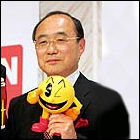 Masaya Nakamura, the founder of pioneering Japanese video game maker
Masaya Nakamura, the founder of pioneering Japanese video game maker 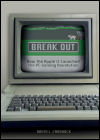 Schiffer publishes David L. Craddock’s non-fictional collection of essays on the stories and creators behind Apple II computer games, “
Schiffer publishes David L. Craddock’s non-fictional collection of essays on the stories and creators behind Apple II computer games, “ Former Atari game designer and programmer
Former Atari game designer and programmer  Santa Monica Press publishes Warren Davis’ career memoir, “
Santa Monica Press publishes Warren Davis’ career memoir, “